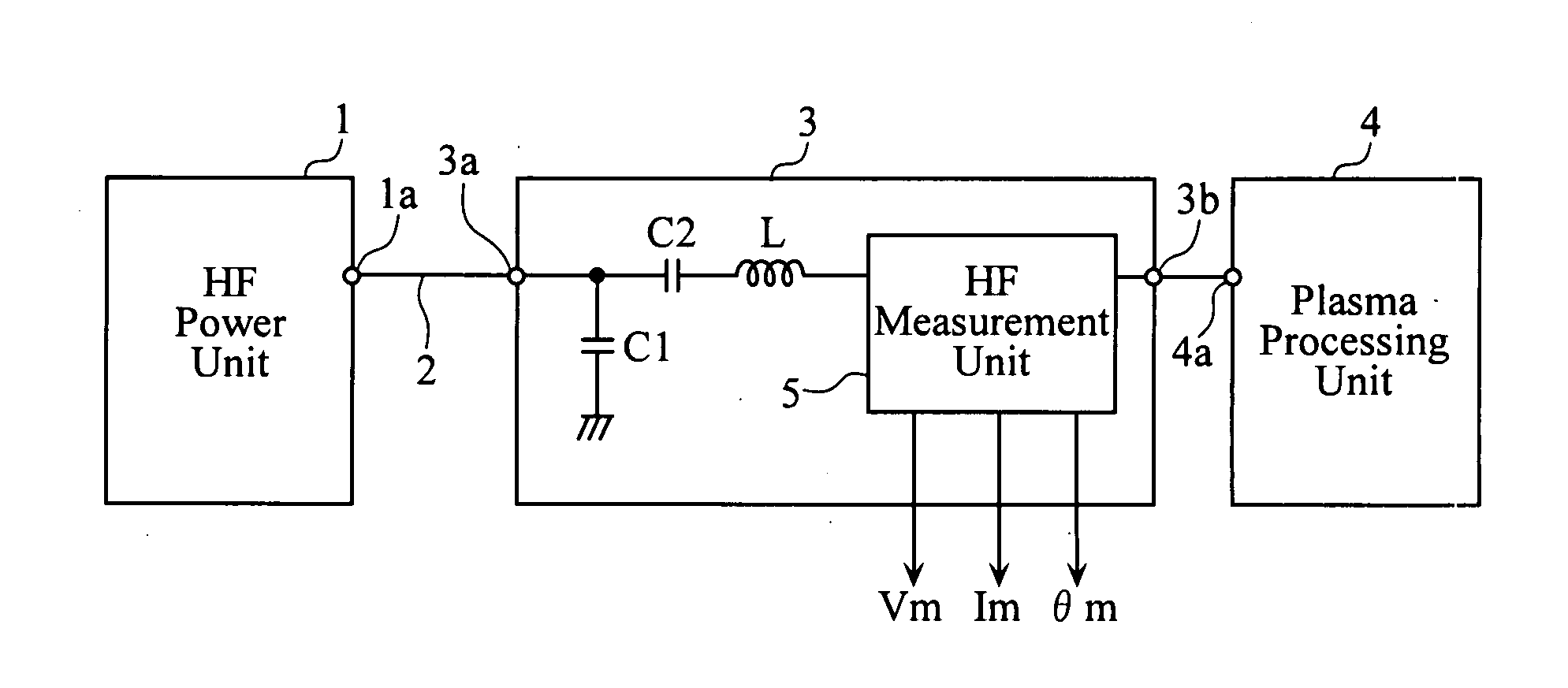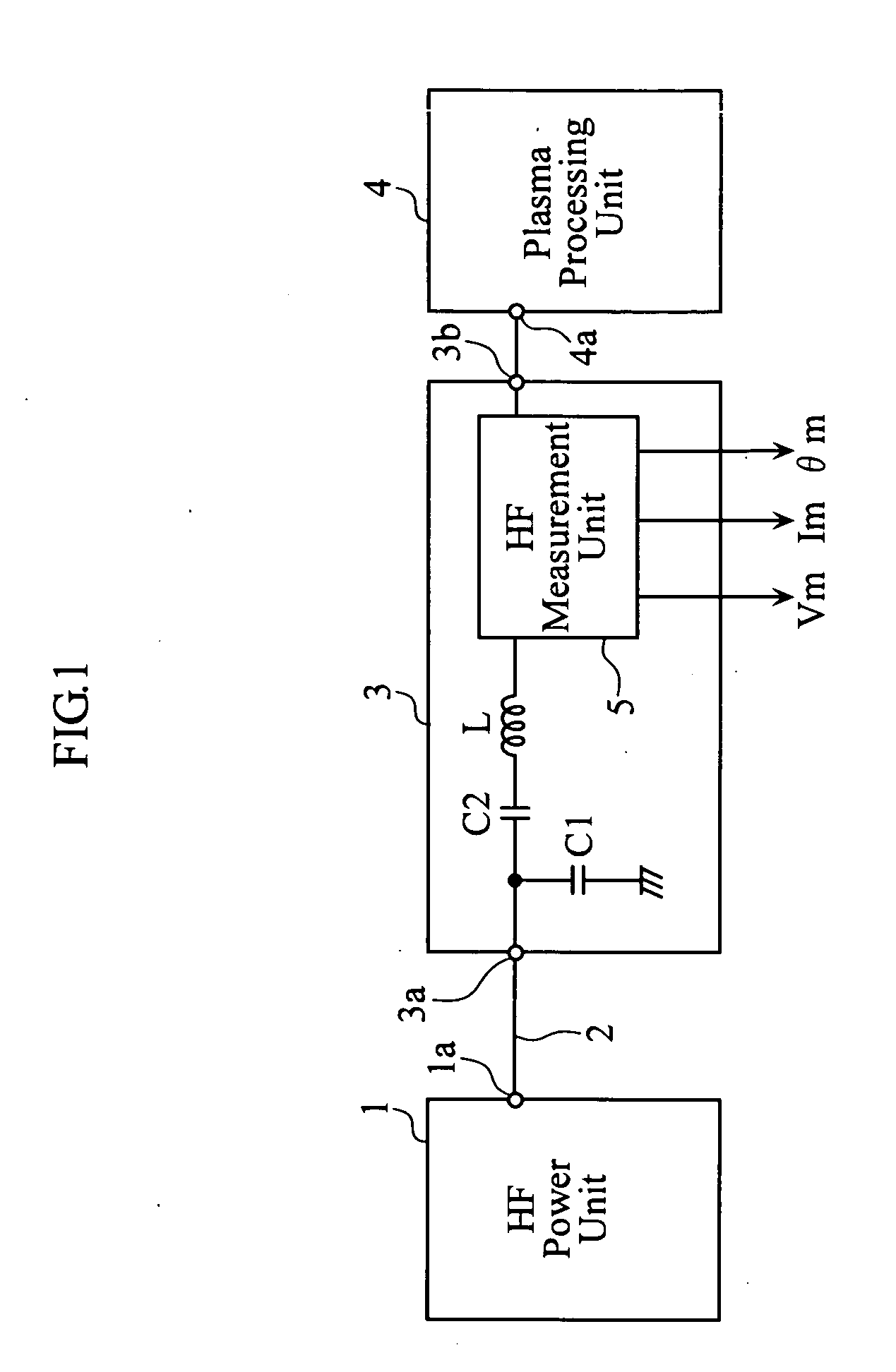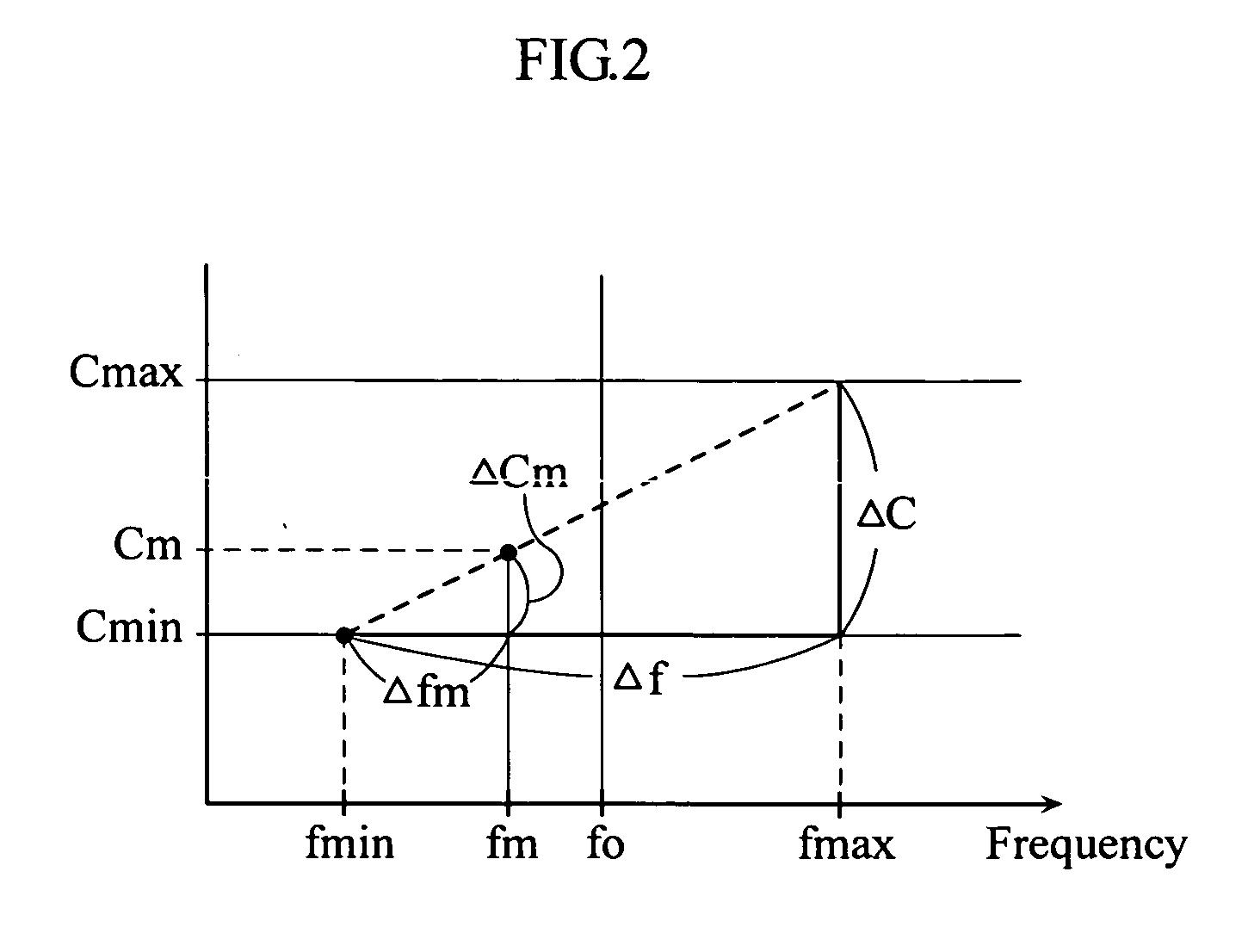Plasma processing system
a processing system and plasma technology, applied in the field of plasma processing system, can solve the problems of plurality of sensors of the same type, uniform sensitivities, and inability to connect high-frequency signal-detecting probes to such a plasma processing system, and achieve the effect of facilitating the setting of target load impedance zl and facilitating examination
- Summary
- Abstract
- Description
- Claims
- Application Information
AI Technical Summary
Benefits of technology
Problems solved by technology
Method used
Image
Examples
Embodiment Construction
[0068] Preferred embodiments of the present invention will be described below with reference to the accompanying drawings.
[0069]FIG. 1 is a block diagram of a plasma processing system including a high-frequency measurement unit according to the present invention. The plasma processing system is employed for executing an etching process or the like, on a work such as a semiconductor wafer or a liquid crystal substrate. The plasma processing system includes a high-frequency power unit 1, a transmission line 2, an impedance matching device 3, and a processing unit 4.
[0070] The transmission line 2 is constituted of a coaxial cable, and connects the high-frequency power source 1 and the impedance matching device 3. The impedance matching device 3 is connected to the plasma processing unit 4, which is a load.
[0071] The impedance matching device 3 serves to roughly match the impedance of the high-frequency power unit 1 with that of the plasma processing unit 4. The impedance matching de...
PUM
 Login to View More
Login to View More Abstract
Description
Claims
Application Information
 Login to View More
Login to View More - R&D
- Intellectual Property
- Life Sciences
- Materials
- Tech Scout
- Unparalleled Data Quality
- Higher Quality Content
- 60% Fewer Hallucinations
Browse by: Latest US Patents, China's latest patents, Technical Efficacy Thesaurus, Application Domain, Technology Topic, Popular Technical Reports.
© 2025 PatSnap. All rights reserved.Legal|Privacy policy|Modern Slavery Act Transparency Statement|Sitemap|About US| Contact US: help@patsnap.com



